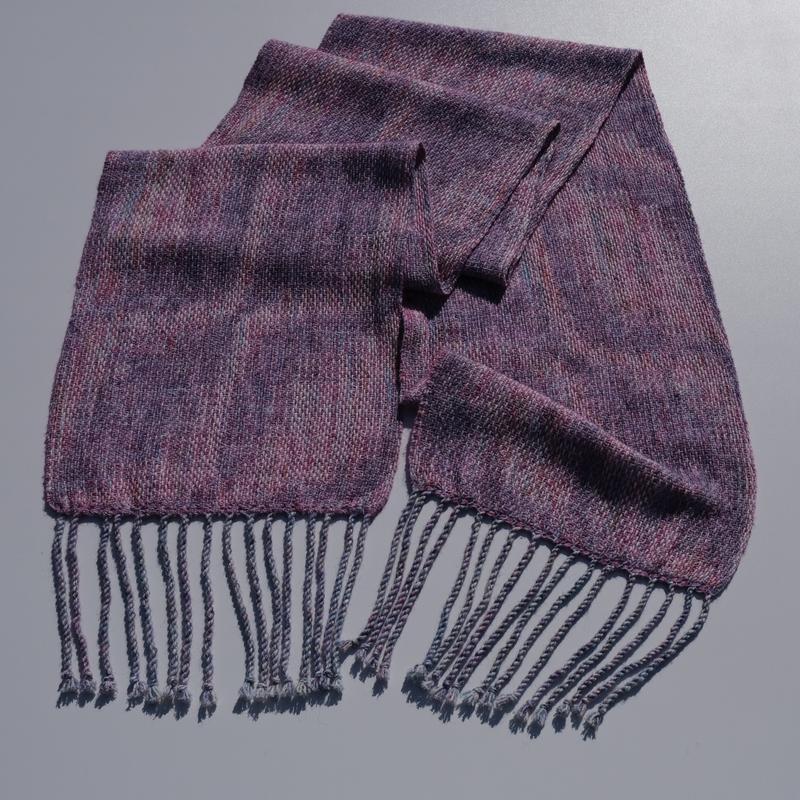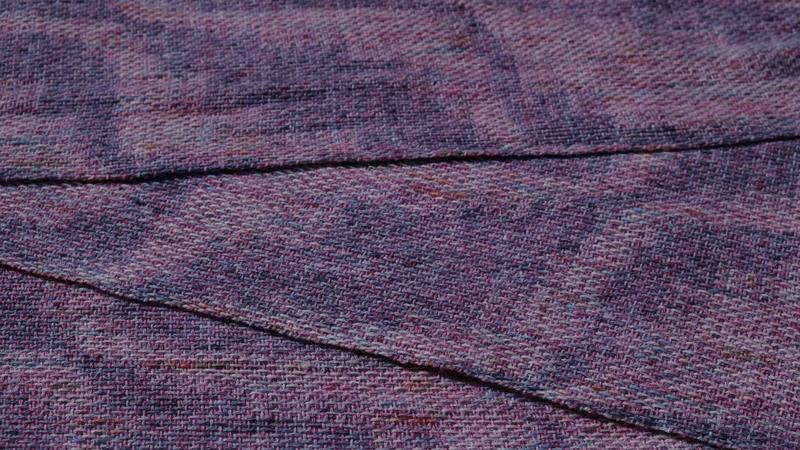Perhaps one of the most well-known mathematical concepts in the world of handcrafts is the Fibonacci sequence. In weaving, this sequence of integers can be used to determine the width of colored stripes in a warp, the number of block repeats in a block weave, and so on. In one of my latest hand weaving projects, I decided to use the Fibonacci sequence to design a wavelike pattern.
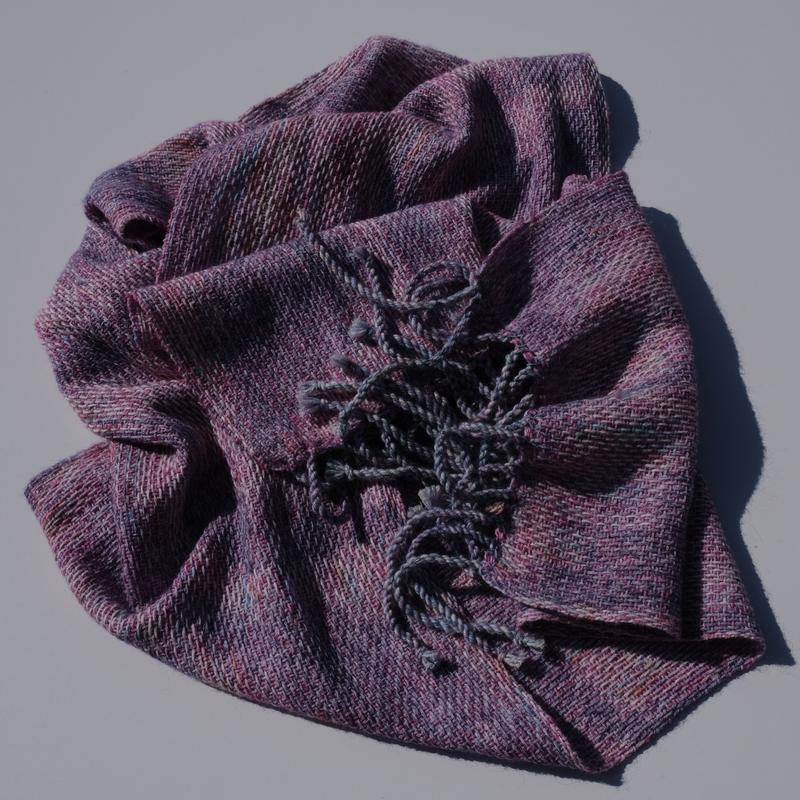
Summing it up
Mathematically, the Fibonacci sequence is defined as follows. The first number of the sequence is 0 and the second number is 1. The subsequent numbers of the sequence are defined as the sum of the previous two numbers. So, the third number equals 0 + 1 = 1, the fourth number is 1 + 1 = 2, and the sequence proceeds with 3, 5, 8, 13, etcetera.
The sequence is not only a fun mathematical concept, it also appears in nature. For example, it can be seen in the number of petals on flowers, the number of branches and leaves on trees and plants and the arrangements of seeds in flowers such as the sunflower. Hence, using the Fibonacci numbers in your handcraft often gives the design a natural and pleasing look.
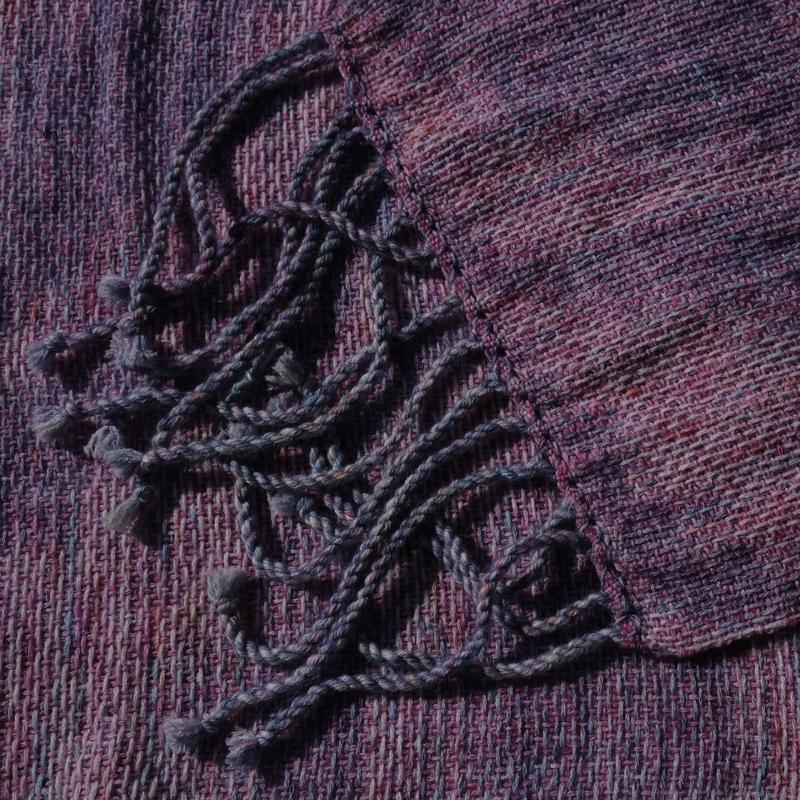
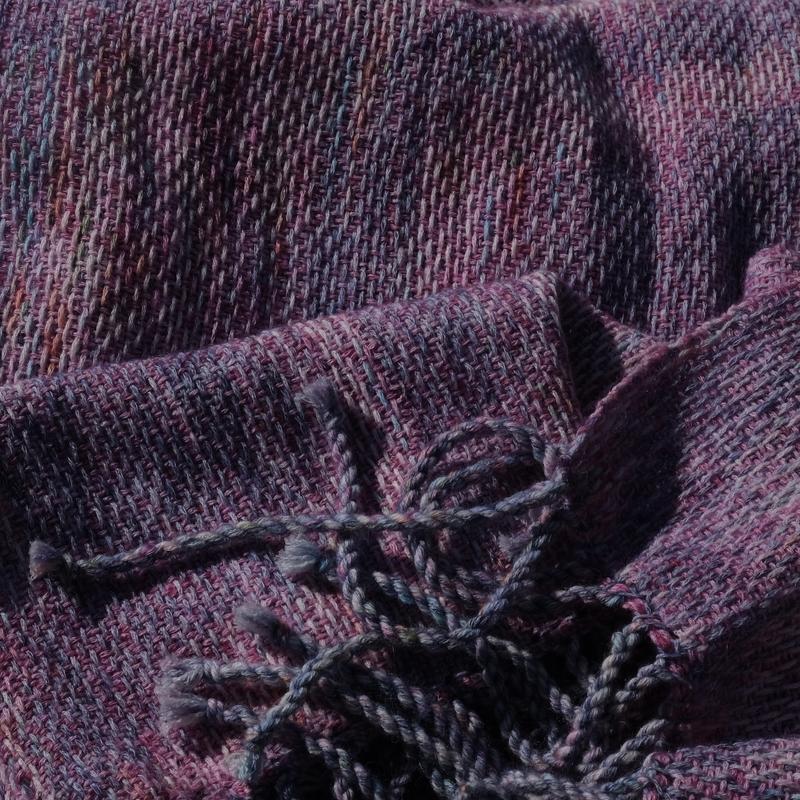
The idea of weaving something based on the Fibonacci sequence had been in my mind for a while. When I saw some beautiful hand-dyed skeins of yarn in my local yarn shop, I realized those would be the perfect yarn to make this idea come to life. I picked a skein of blue and a skein of white with colored speckles to alternate in the warp and added two skeins in bright pink for the weft. The yarn is a beautiful mix of cotton, alpaca and merino. The thread is quite thin, making it perfect for an airy summer shawl. I was ready to start working on a shawl design incorporating the Fibonacci numbers.
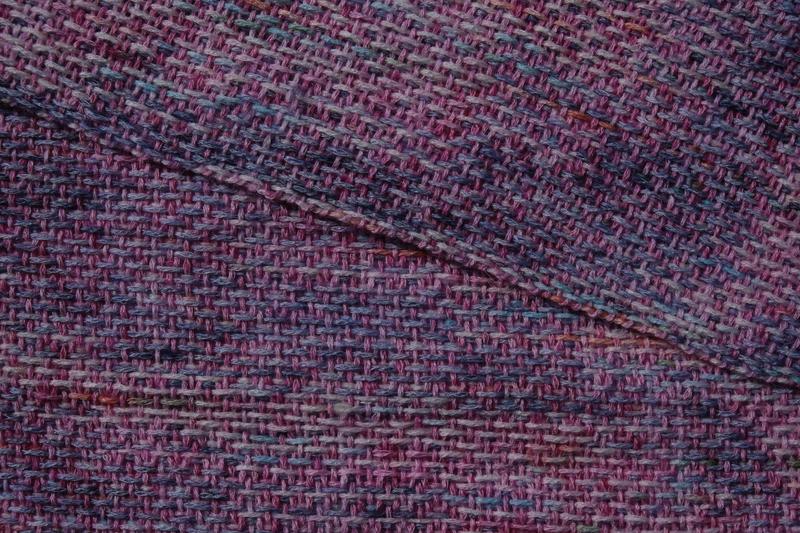
Weaving waves
To capture the Fibonacci sequence in weaving, I came up with a wavelike pattern. Basically, I made a straight draft covering 8 shafts. However, I did not use one warp thread per shaft as would be the case for a standard straight draft. Instead, I let the Fibonacci numbers decide how many warp treads to put on a shaft before continuing to the next one. So, there is 1 warp thread on the first shaft, 1 on the second shaft, 2 on the third shaft, up until 13 warp threads on shaft 7. Then, I went back down the Fibonacci sequence: 8 warp threads on the last shaft, 5 threads on the first shaft and so on. I applied the same technique to the treadling. This variation in the amount of warp and weft threads per shaft results in a weaving draft that starts to wave. Using the Fibonacci sequence, I ended up with a wavy weave.
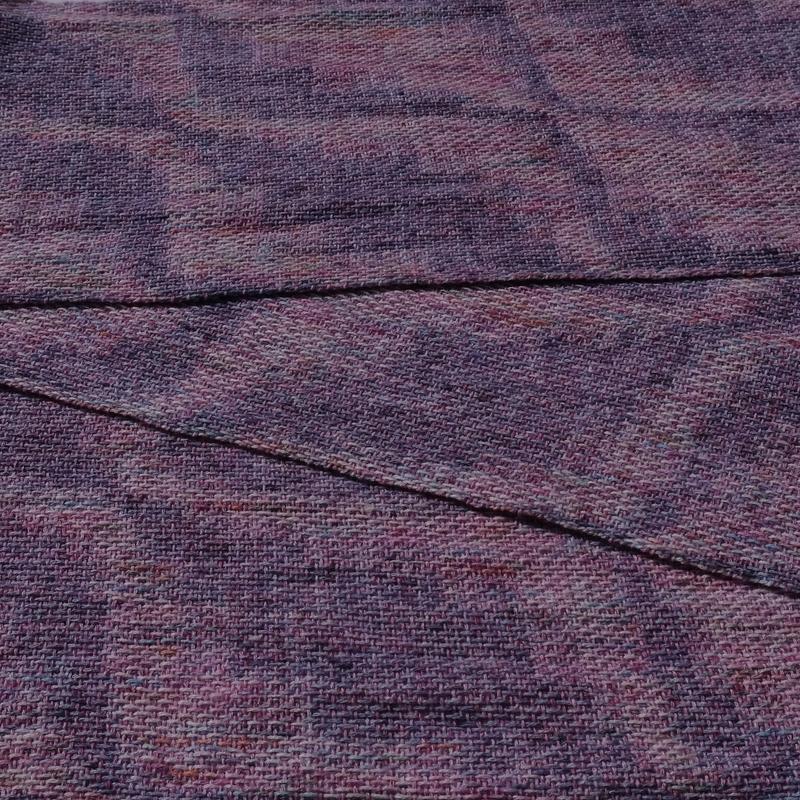
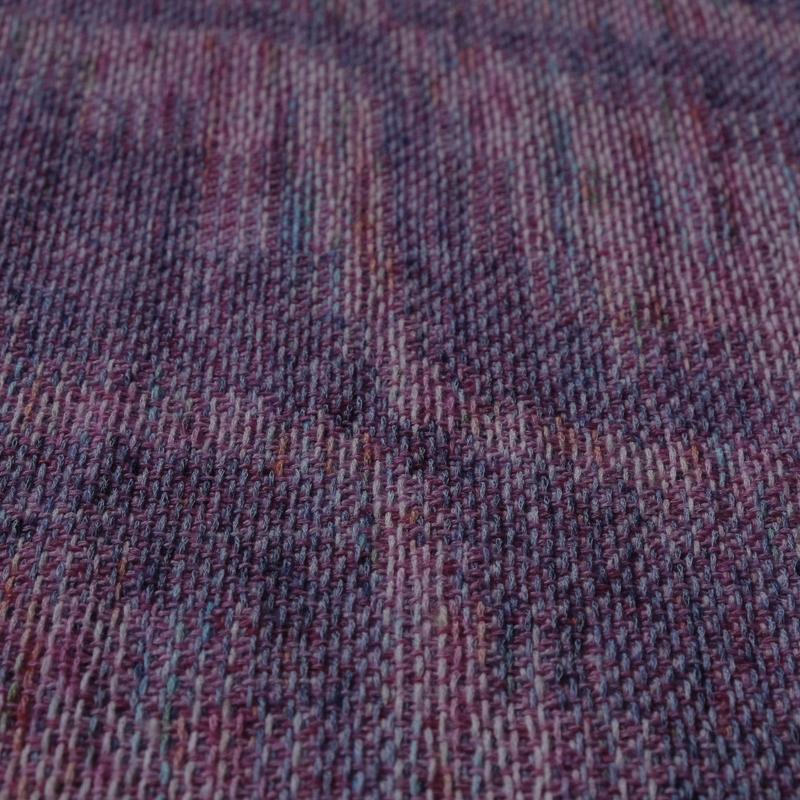
Placing several adjacent warp threads on the same shaft is not the way to go for the actual woven cloth. The draft I made was a block draft, not a proper weaving draft yet. In a block draft, the warp ‘threads’ do not represent actual threads but blocks of threads. By substituting the blocks of threads into the block draft, a weaving draft is created. The fun of making block drafts is that you can substitute blocks based on different weaving structures in the same draft, ending up with countless weaving drafts derived from a single block draft.
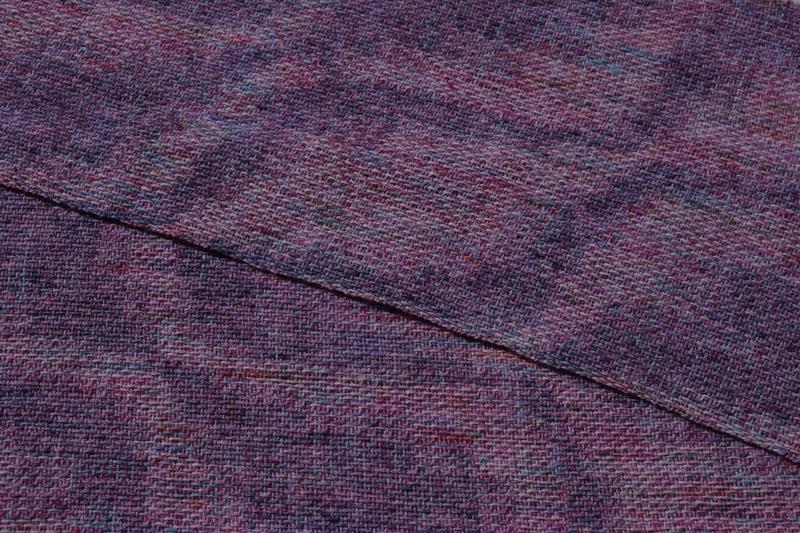
True to my new love for Turned Taquete, I turned the block draft into a Turned Taquete pattern. In weaving software, this is quite simple: redraw the block warp onto a network, add a parallel repeat to the warp and add a tabby to the treadling. Each of these steps is just a couple of clicks, hence my design was quickly done.
Subtle and soft
The yarn was a joy to work with and led to surprising results. The alternating blue and speckled yarn looked beautiful together in the warp. Once I started weaving with the bright pink weft, the result was more subtle than I had anticipated. The cotton, alpaca and merino fibers in the yarn did not take up the dye in the same way: the yarn has a white cotton core thread containing bright colored alpaca and merino fibers. Still, the blue and bright pink yarn had a quite intense color on the skein.
In the woven cloth, the three yarn colors combined into a more subtle color palette. This made for subtle waves changing in color between the blue and speckled warp on a pink background. The resulting shawl is incredibly soft, light and airy. I had fun applying the Fibonacci sequence into weaving and trying out this beautiful hand-dyed yarn. The shawl is perfect for this time of the year, so I will certainly enjoy wearing it.
